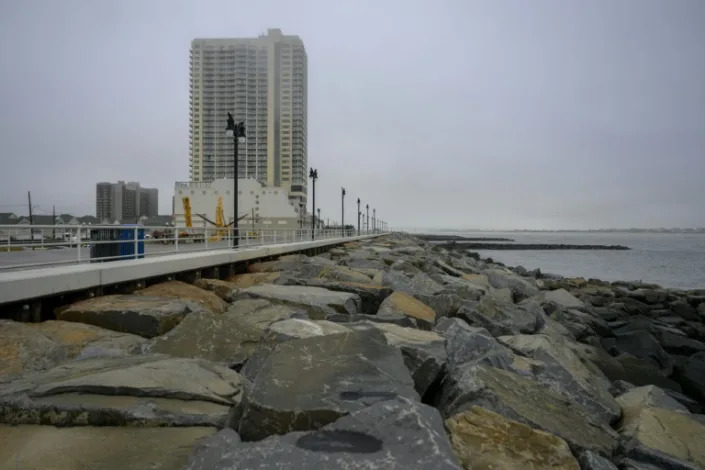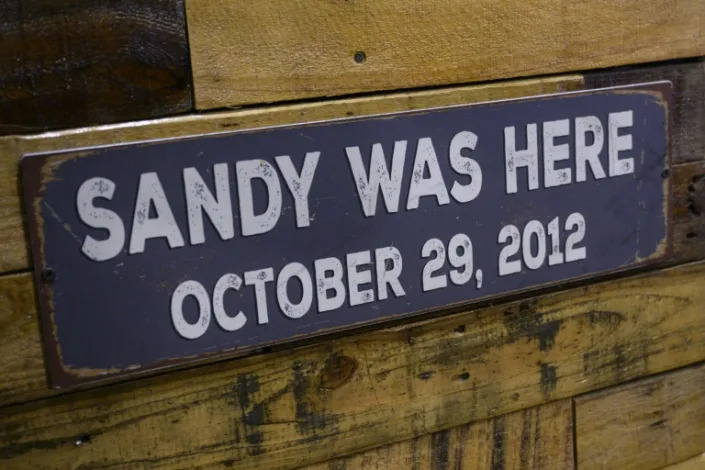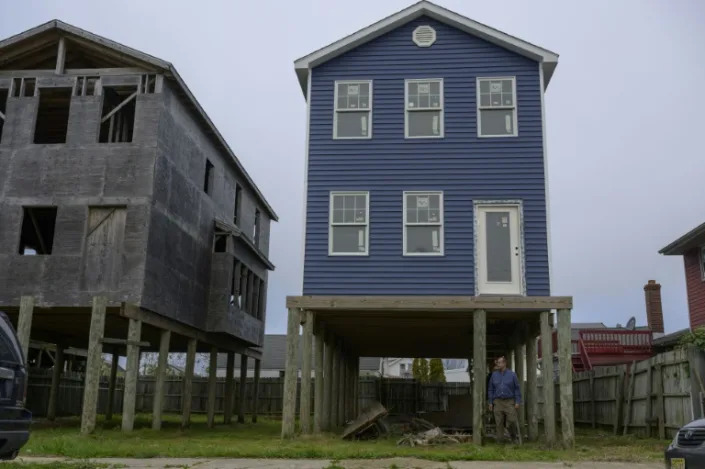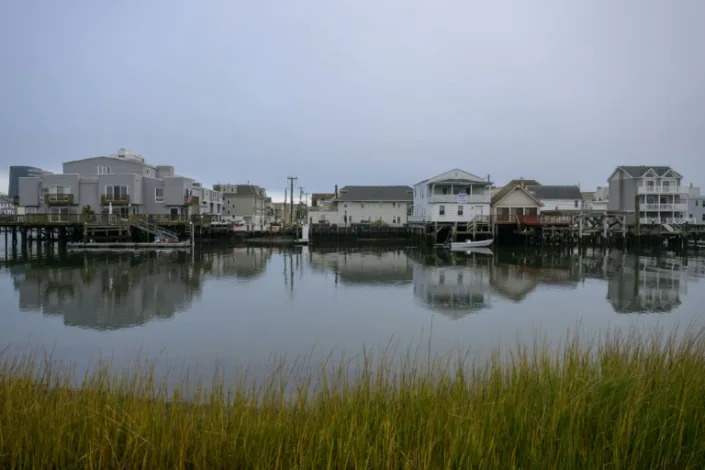Ten years after Sandy, Atlantic City still suffering floods
Andréa BAMBINO
Fri, October 28, 2022

A decade after Superstorm Sandy ravaged the US east coast, the seaside town Atlantic City has fortified its famous boardwalk that narrowly divides casinos and the ocean.
But in certain neighborhoods, flooded streets have become routine.
North of the city dubbed the Vegas of the East Coast, a new stretch of boardwalk is protected from crashing waves by a rock barrier and a seawall, a $60 million project completed in 2018.
Further inland stands a wasteland of sorts, where a few buildings still tower, survivors of the deadly storm's devastation.

Jim Rutala, a private planning consultant for the city, said the tens of millions in investment in the shoreline have "provided tremendous protection" and could accommodate new construction.
Founded in the 19th century as a spa resort, Atlantic City feted its golden age during the Prohibition era in the 1920s, a haven for revelers and the high-rolling mob before it later became a tourist destination thanks to its nightclubs and casinos.
- 'Economic generator' -
The city immortalized in song by Bruce Springsteen has always benefited from its spot on the sea, but the threat of rising waters has made the area increasingly vulnerable.
On October 29, 2012, Sandy -- which left more than 100 people in the United States dead -- caused serious damage to nine percent of homes in Atlantic City, according to the state of New Jersey.

The city of some 40,000 people is "a tremendous economic generator," said Rutala, where 35 percent of residents live in poverty.
Further south, where hotels, casinos and restaurants populate the seaside, some of the shoreline was able to weather Sandy thanks to beaches and artificial dunes that the Army Corps of Engineers had constructed, with millions of cubic meters of sand washed offshore.
Without them "water would be lapping up against the boardwalk," said Kimberly McKenna, the associate director of the Stockton University Coastal Research Center.
But "at some point, we're either gonna run out of sand, or it'll be too expensive to keep up," said the geologist.
- High-tide flooding -
Heading a little deeper toward the back of the bay shows just how quickly the water that's made Atlantic City a tourist hotspot can become a handicap.

"Every time it rains, any rain other than a light rain will cause a flood on this street," said lifelong resident Thomas Gitto.
The 62-year-old retiree worked for decades in the casinos, and has always lived on the same street of modest homes.
"We even have a joke -- it says that if it just gets cloudy, it will flood. And it's true. Because anytime we have like a full moon, or some kind of storm coming, the water comes up through the sewer, and the street will flood all the way up to the porch and sometimes it even comes inside the house," Gitto told AFP.
The high-tide floods are likely to become increasingly common as sea levels rise due to climate change.
Atlantic City should expect to experience such inundations between 17 and 75 days per year by 2030, compared to less than once a year in 1950, according to a 2019 study by Rutgers University.

In the Chelsea Heights neighborhood, Freddie Restrepo and his sister Paula, immigrants from Colombia, lost both of their side-by-side homes to Sandy.
After 10 years and a number of mishaps, they have only been able to rebuild the walls and foundations that are now raised, similar to a number of properties in the area.
Today, according to Restrepo, the street frequently floods.
- 'A lot worse' -
Nearby at his tavern Vagabond Kitchen and Tap House, co-owner Elvis Cadavid says "things have just gotten a lot worse."
"We're well aware of when the flooding is going to happen," he said. "So we deal with it, we postpone openings, we sometimes close early. If it's really bad, we might close for the day, we might lose a day."

Rutala said the city, cognizant of its weak spots, started renovating its drainage system and has constructed several bulkheads bordering the interior bay.
Since Sandy, more than 300 homeowners in Atlantic City -- and more than 7,000 in New Jersey -- have received aid on average of more than $120,000 to rebuild, according to state figures.
But according to Rutala, at least 200 homes are still classified as regular flood victims.
arb/nr/led/mdo/tjj
No comments:
Post a Comment